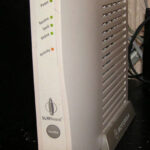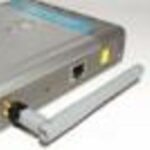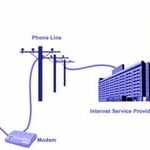Many desktop and laptop computers come with built-in modems. However, you may need to purchase a new modem if your computer doesn’t have one or the built-in modem fails (or needs to be upgraded). There are a number of different modem types available. The best type to choose depends upon your computer’s specifications, your internet connection, and how you use the computer.
INTERNAL: This type of modem is compact, doesn’t need an external power supply, and is less likely to be accidentally broken (esp. compared to an external modem used with a laptop). If you plan to use the modem for DOS, another non-Windows operating system, or a version of Windows older than ’95 (3.x, 2.x, etc.), you may want to avoid “software modems”, such as WinModems – these might not be recognized by some operating systems. Some internal modems – mostly on laptop computers – are permanently built-in, but most are removable and fit in an ISA, PCI, or PCMCIA slot. PCMCIA modems are very thin and can be installed in most laptop computers. Most desktop computers will accept an ISA modem; a few older models don’t have PCI slots. If your computer doesn’t have any free expansion slots, you should consider an external modem instead.
EXTERNAL: These modems have the advantage of being much easier to install and replace. They can also be quickly switched between two or more computers if necessary. They are available in several different types which use different computer ports. The most common types are serial and USB modems, while a few can be found which connect to a parallel port. Most serial modems require an AC adapter for power, which limits their portability. Some USB modems can run on power provided through the USB port. Almost all computers have serial accessory ports, while some older models don’t have USB ports. Make sure you have correctly identified what type of ports your computer has before purchasing an external modem. A few external modems have both USB and serial port connections, including some models made by Actiontec and Lucent. Some older serial ports (mostly pre-1990) may only be able to support modems up to a certain speed, although it is possible to upgrade them.
SPEED: While most newer modems support connection speeds up to 56kbps, it is common to find used modems which are limited to a connection speed of 28.8 or 14.4kbps. A modem which is limited to 33.6 or 28.8kbps may be acceptable if you live in an area where connection speeds never exceed this level. Make sure you know a used modem’s speed before purchasing it – some older modems are limited to 9.6, 2.4 or fewer kbps.
A few other features to consider are activity lights (these show if information is being transmitted or received), separate phone jack (this allows a telephone to be connected to the modem, eliminating the need for two phone jacks on the wall – most modems have this feature, except for some external and built-in laptop modems), and external DIP switches to determine the COM port being used (on some older internal modems).



